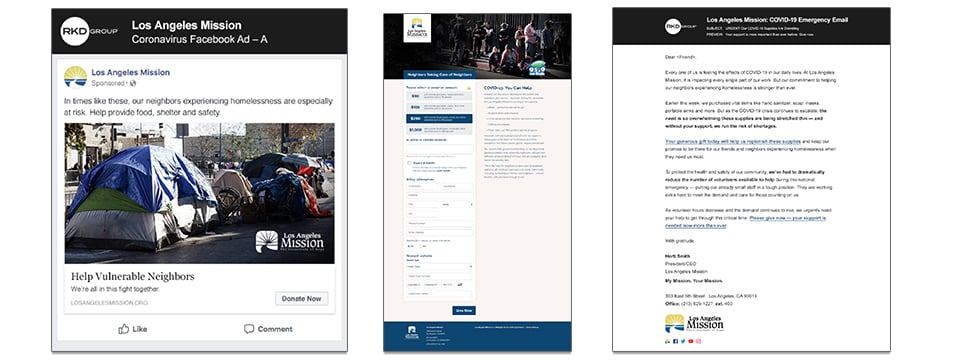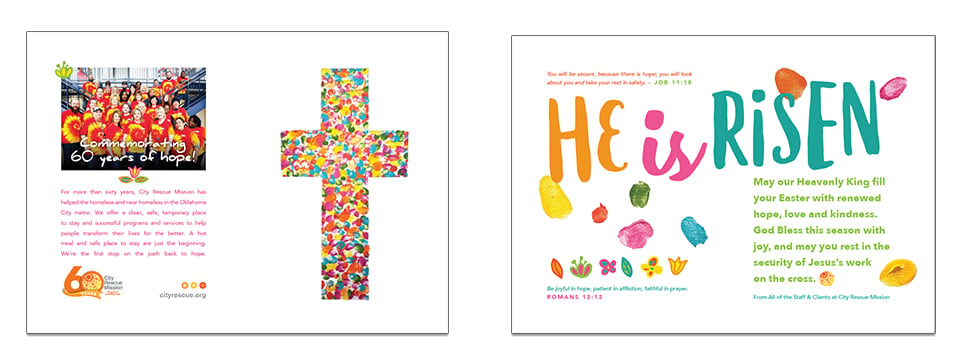Across the United States, people experiencing homelessness are the most exposed members of our society. Thus, it’s no surprise to the rescue missions who work closely with them that the COVID-19 pandemic is affecting this vulnerable community.
Yet, time and again, rescue missions are leaning in where other nonprofits may be pulling back due to safety standards, reduced staff or lack of funds. They’re doing amazing things to respond in this time of great need – truly “rescuing” people who have no other place to go right now.
The character of rescue missions is shining through as they provide meals, shelter and treatment – all with a hope and love found in God – for a growing number of people as the economic downturn of this pandemic takes hold.
Rescue missions always put service to others first, but it’s also important to look at what’s happening in charitable giving.
Donors are responding to this need as well. They’ve stepped up to help out nonprofits on the front lines like food banks, hospitals, and rescue missions.
It’s truly inspiring.
But one thing we’ve learned about this pandemic is that it’s a marathon, not a sprint. And previous disasters have taught us to expect a “bump” up in giving in the immediate aftermath, followed by a more prolonged “slump” in later months.
In a time of such uncertainty and volatility, what can rescue missions do to prepare their fundraising programs for the long haul of an economic downturn? Here are a few suggestions that will help you continue to fulfill your mission and goals:
BE NIMBLE
If the last few weeks have taught us anything, it’s that the news can change rapidly around this pandemic. From event cancellations to social distancing to shelter-in-place orders, our entire society has been turned on its head.
Rescue missions have seen this in the great influx of people needing help. At the same time, many volunteers are staying home. This combination has put a strain on operating costs.
That’s why it’s crucial to be able to move quickly to match the latest news. If your area becomes a hotspot for the pandemic, you’ll need to quickly create emergency appeals and emails with urgent messaging.
As we’re seeing, the pandemic is also providing nonprofits a rare opportunity for digital advertising. More people are at home all day, consuming more online media to pass the time.
Take advantage of this and get your message of hope and Christ-centered compassion in front of donors who are looking for ways they can help.
Los Angeles Mission presents a great example of being nimble. They crafted their first coronavirus-related email on March 13 – two days after the World Health Organization officially declared COVID-19 a global pandemic.
In the weeks since, they’ve held radiothons to raise money, implemented text-to-give elements, sent out additional emails and started a series of digital media ads.
As a result, LA Mission has seen a 70% increase in year-over-year digital revenue from March 13 through April 20.

BE RELEVANT
People miss their family, their friends, and their community. They’re searching for ways to be social and for messages of positivity.
You can help satisfy this craving simply by being relevant.
Tell the uplifting story of your rescue mission’s response to the coronavirus pandemic. Talk about what’s happening at the Mission today. Highlight the people you’re helping. Show the impact of donations.
Take pictures and video and share them with your supporters on social media. This doesn’t have to be a polished, professional production. Use your phone and be your natural, authentic self. Your mission is a place of miracles. In this time when people are looking to connect, you have an amazing opportunity to share your story.
You also need to be relevant in your creative messaging. You can’t send out emails and direct mail that completely ignore the current situation.
Take the time to look ahead at your upcoming campaigns and determine whether they still make sense in a pandemic. Sometimes, all it takes is a small change to acknowledge COVID-19.
City Rescue Mission showed what this looks like with a small change to the wording of their Easter Cards. There was no ask, no appeal – just a message of hope during this time of crisis. This relevant cultivation strategy brought in more than $38,000 without even asking for a donation.

BE INNOVATIVE
Finally, now is no time to be complacent. Everything has changed, so you can’t keep doing the same things.
Need to replace event revenue? Take part in Giving Tuesday Now or think about a new idea like livestream fundraising as an option.
Want to connect with mid-major donors? Reach out with a wellness call or set up a virtual town hall with your CEO on Zoom.
Learn, study, read. Look at all the resources out there – blogs, webinars, news articles, videos, etc. – and be a voracious learner. They won’t all be a good fit, but you can determine which ideas will work best.
Just don’t put your fundraising efforts on the backburner. Pivot, adjust, take risks, but don’t stop.
With change comes uncertainty, but change is supposed to feel a little uncomfortable. Those who can adapt best to change are the ones who grow.
That’s true for each of us, and it will also be true for nonprofits in the coming months.





Leave a comment: